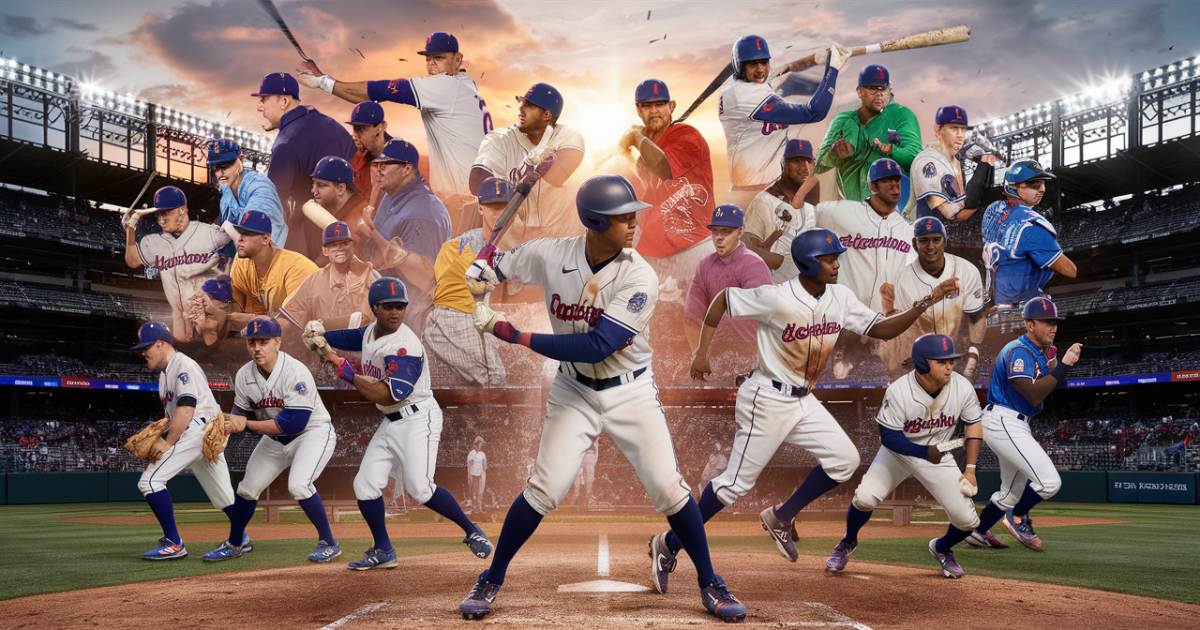A baseball team is a group of players who compete together in the sport of baseball. It consists of both fielders and batters who work in unison to outscore their opponents. The number of players on a baseball team can vary depending on the level of play and league regulations.
Have you ever wondered why there are always nine players on the field but many more in the dugout? The answer lies in the complex roster rules of baseball. From the major leagues to amateur clubs, team sizes have evolved to meet the demands of this beloved sport.
We’ll explore the fascinating world of baseball rosters, examining how many players make up a team at various levels and why these numbers matter in America’s favorite pastime.
How Many Players Does an MLB Team have?
In Major League Baseball (MLB), the pinnacle of professional baseball, teams are allowed a 26-man roster for most of the season. This expanded roster size, implemented in 2020, gives managers more flexibility in their game strategies and helps prevent player burnout during the long 162-game season.
But wait, there’s more! MLB teams can add an extra player for doubleheaders, bringing their total to 27. And come September 1st, rosters expand to 28 players, allowing teams to bring up promising minor league talent or add depth for the final playoff push. This September roster expansion has become a crucial period for teams vying for postseason berths.
The COVID-19 pandemic threw a curveball at the 2020 season, leading to some unique roster rules. Teams started with 30 players, then dropped to 28, showcasing baseball’s ability to adapt to unprecedented circumstances. This flexibility highlights the sport’s resilience and the importance of having a deep player pool to draw from.
40-Man vs. Active Roster:

Beyond the active roster of 26 players, MLB teams maintain a 40-man roster. This larger group includes the active players plus 14 additional athletes who can be called up when needed. It’s like having a talented bench of pinch-hitters ready to step up to the plate at a moment’s notice.
The 40-man roster serves multiple purposes. It allows teams to protect their most promising prospects from being snatched up by other organizations in the Rule 5 draft. It also provides a pool of players to draw from in case of injuries, slumps, or other unforeseen circumstances. This system gives teams the flexibility to navigate the ups and downs of a long season while nurturing future stars.
How Many Players Does a Minor League Baseball Team Have?
The minor leagues, baseball’s developmental pipeline, have their own set of roster rules. Full-season minor league teams typically carry 25 active players, mirroring the MLB structure before the recent changes. However, Class-A and Class-A Advanced leagues allow for a total of 35 players, giving younger prospects more opportunities to showcase their skills.
Short-season leagues, which operate during the summer months, have even larger rosters with a 35-player limit. These expanded rosters in the lower levels of professional baseball allow teams to evaluate a wider range of talent and provide playing time to developing athletes.
It’s worth noting that minor league roster sizes can be affected by MLB players on rehabilitation assignments. These big-league stars temporarily joining minor league clubs for injury recovery don’t count against the roster limits, adding an extra layer of excitement for fans of these smaller market teams.
Read More:
How Long Do Football Games Last on TV: Breaking Down the Timeline
Final Thoughts
Baseball teams have grown bigger over time to keep up with the sport’s changes. We’ve come a long way from the simple nine-player teams of the 1800s to today’s complex rosters. These changes help keep games fair and players healthy.
Bigger teams, especially with the September roster increase, help clubs handle the long season better. It gives new players a chance to shine in the big leagues and lets managers make smarter choices in important games.
Looking ahead, how teams manage their players will stay super important. Balancing who’s playing, who’s up-and-coming, and who’s there for backup is tricky but crucial. Whether you’re a huge fan or just enjoy a game now and then, knowing about team sizes makes baseball even more fun to watch.

I am a web content writer with 4 years of experience. I share insights and expertise on various topics through my personal blog, “haadizone.com,” covering a wide range of global content.

